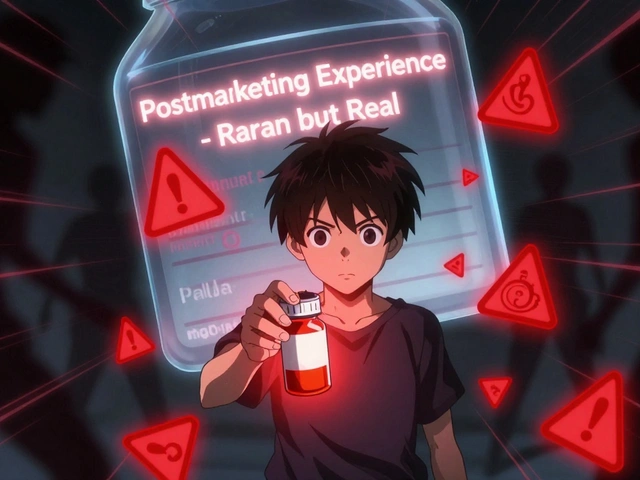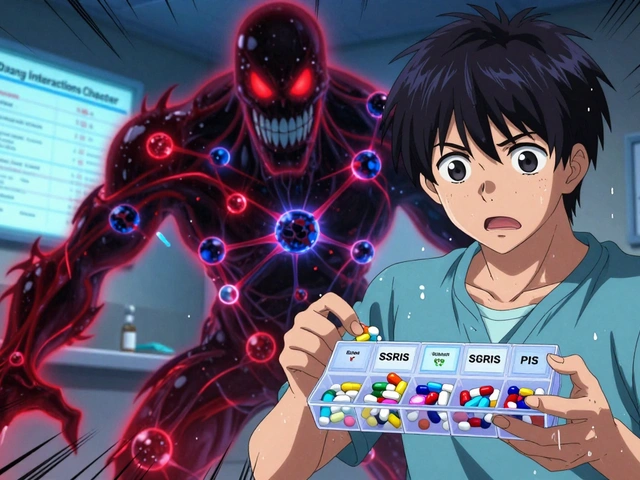Pill Showdown: What Makes Pregabalin and Gabapentin Tick?
Neuropathic pain can be a nightmare—burning, stabbing, or crawling sensations that just don’t play by the usual rules. Two heavyweights, pregabalin (pregabalin), sold under the brand name Lyrica, and gabapentin (gabapentin), known best as Neurontin, have been in the ring for quite a while fighting those stubborn, misfiring nerves. But what really separates them? Both drugs belong to the same team of “gabapentinoids,” which means they’re kind of like chemical cousins. Originally, these meds were designed for seizures, but folks quickly saw how good they could be at quieting nerve pain.
The science isn’t as mysterious as you might think. Both Lyrica and Neurontin work by dialing down that wild release of neurotransmitters—basically calming hyperactive electrical activity in your nerves. The end game is less pain, fewer sensations that feel like a cattle prod to your skin, and maybe even fewer sleep interruptions. But here’s the catch: even though they kinda look similar on a molecular level, they’re not interchangeable. Lyrica is newer and was built to fix some of the quirks in the original Neurontin formula. In fact, pregabalin gets absorbed way more quickly and has more predictable levels in your blood. With gabapentin, it’s more of a roll-the-dice affair—sometimes it works like a charm, sometimes not so much. That’s why people often need higher doses of Neurontin, and why Lyrica feels more ‘punchy’ at a lower dose.
Here’s another quirky thing about the two: pregabalin reaches its top effects in about an hour, while gabapentin might take three, or even four hours, after you swallow a pill. So if you need quick relief for sudden bouts of neuropathic pain, Lyrica wins the sprint every time. Several studies in the last few years found that pregabalin’s fast action also helps with sleep disturbances and anxiety that often tag along with nerve pain. Take for example, a 2023 survey of pain clinics across the US where more than 40% of patients said they felt noticeably better within a few days of starting Lyrica, compared to the week or longer it often takes with Neurontin.
But speed isn’t everything, right? When cost is in play (and let’s not pretend it never is), gabapentin is much cheaper. Generic Neurontin is pennies on the dollar compared to brand-name Lyrica or even its generic versions in many places. If insurance doesn’t cover your meds, that’s something you really can’t ignore.
The Real-World Experience: Relief, Side Effects, and Dosage
This is where the rubber meets the road. Ask anyone who’s tried both, and you’ll get a mix of stories—and opinions—about what works, what doesn’t, and what makes life better or just weird. Let’s talk how effective these drugs really are for neuropathic pain. A head-to-head comparison study in 2022 followed 500 patients with diabetic nerve pain. About 63% reported significant pain relief (that’s a 50% drop in daily pain) using pregabalin, compared to 55% for gabapentin—not a huge difference, but it’s there. Pregabalin often gave more consistent results and steadier day-to-day relief, likely thanks to its reliable absorption.
But life isn’t just about pain scores—it’s also about side effects. Here’s the deal: both Lyrica and Neurontin can make you drowsy or dizzy. Some folks say it’s like walking through a fog or fighting the urge to nap at your desk. Pregabalin tends to cause more swelling in the hands and feet, and some users report blurry vision and weight gain, especially with higher doses. Gabapentin sometimes causes more nausea and brain fog. Many people stop one or the other because their heads just feel “off.” Only about 10% of people in these studies quit because of side effects, but if you’re in that group, the numbers don’t mean much, right?
Dosing is another daily hassle. Pregabalin is usually started at a lower dose and gets ramped up pretty quickly—most patients take it twice daily. Gabapentin? It usually needs to be taken three times a day, and sometimes the doses are huge (up to 3600 mg per day). Miss a dose, and you could be back at square one. Lyrica’s steady effects make missed pills less dramatic, which is a big relief for people with busy lives (or those who just forget a lot).
Check out this quick comparison:
| Feature | Lyrica (Pregabalin) | Neurontin (Gabapentin) |
|---|---|---|
| Onset of Relief | Within 1 hour | 3-4 hours |
| Dosing Frequency | 2x daily | 3x daily |
| Peak Absorption | Rapid, predictable | Slower, variable |
| Common Side Effects | Swelling, weight gain, drowsiness | Dizziness, nausea, drowsiness |
| Cost | High | Low |

What Patients Actually Prefer: Feedback From the Front Lines
Numbers are nice, but real stories are what matter when you or someone you love is living with nerve pain day and night. In online forums and patient advocacy groups, the debate between Lyrica vs Neurontin is never quite settled. Some say pregabalin changed their life—pain went from a constant 8 out of 10, down to a manageable 3 or 4. They talk about sleeping better, walking farther, or even picking up long-lost hobbies because the edge is finally off the pain.
For others, gabapentin wins hands down. There’s less chance of waking up groggy. People who worry about weight (or whose jobs don’t let them nap at work) often stick with Neurontin. Older adults seem to tolerate gabapentin better, especially when their systems get knocked sideways by anything more “potent.”
The cost difference is no joke. Many pain management clinics still start with gabapentin just for this reason. If you don’t respond, then they move to Lyrica. In some states, pregabalin is even controlled as a Schedule V drug because of its abuse potential, while gabapentin has fewer restrictions (though that’s changing in some places as doctors see more recreational use).
One weird but important fact: pregabalin sometimes helps with anxiety and fibromyalgia (not just nerve pain), and a lot of patients get prescribed it for both. Gabapentin is still the first choice for restless legs syndrome and even hot flashes in menopause, so it’s not just for pain either. That flexibility means your doctor takes the full story into account—so what works for your friend might not work for you.
If you want a peek into the real-life pros and cons from folks who actually pop these pills every day, start with review platforms, Reddit threads, or pain support Facebook groups. The stories are honest, real, and sometimes brutal—but that’s what makes them so valuable when you’re weighing your options.
Tips, Tricks, and Next Steps: What If Neither Works for You?
Not everyone strikes gold with these two meds. Some people bounce between side effects, or just don’t feel enough relief even at higher doses. That’s where alternatives come in. Luckily, nerve pain management is not a one-way street—there are more tools in the shed than ever before. If you feel stuck, working with your doctor to adjust the dose, tweak the timing (like taking it at night to sleep through the drowsy phase), or even switch to an alternative to gabapentin can make a world of difference.
Some people layer physical therapy, acupuncture, or TENS units with their meds for greater relief. Others try supplements like alpha-lipoic acid or B vitamins, though the scientific evidence is hit or miss. Recently, there’s been new research into duloxetine (Cymbalta) and amitriptyline for nerve pain—antidepressants that have a solid track record, especially when pain comes with mood struggles.
If medications let you down, nerve ablation or spinal cord stimulators are out there—but those are last resorts, not first steps. The good news is that with more choices on the market, you’re not stuck with one-size-fits-all. Even within gabapentinoids, some folks respond better to brand-name drugs, while others do fine with generics. And don’t forget, food can affect absorption for both drugs, so always check if you should take your pill with or without a meal.
If your pain is changing or getting worse, or you’re starting to struggle with memory, balance, or mood swings, definitely loop your doctor in. Wild swings in energy, new swelling, or weird rashes mean you need help fast—don’t tough it out alone. And yeah, never cut pills or stop abruptly without supervision; withdrawal can sneak up hard and leave you worse off than you started.
One last tip? Track your symptoms. Write down pain scores, side effects, and what you’re able to do each day, even if it’s just a sentence or two. Patterns will start to emerge—and that’s pure gold when you're trying to tweak your meds in partnership with your provider. The right treatment might take a few rounds to find, but with the right info and support, you’re so much closer to living life on your own terms—even if those nerves don’t always play nice.









I’ve been on both pregabalin and gabapentin for neuropathic pain, and honestly, the difference can sometimes feel subtle but meaningful. Pregabalin tends to have a more predictable absorption, which might explain why some people feel it kicks in faster or with more consistency. That being said, gabapentin is often the go-to because it’s generic and way less expensive, which is a huge factor for many patients.
From a practical standpoint, side effects like dizziness and fatigue seem common on both, but I've noticed pregabalin can sometimes cause more pronounced sedation, at least for me. I think it largely depends on the patient's body chemistry and lifestyle. I appreciate this article for breaking down not just efficacy but also those day-to-day tolerability issues that don’t always get enough attention.
What do others think about alternative meds? Any experiences with combining therapies or supplements that helped?
Well, I don't mean to stir the pot here, but the whole pregabalin versus gabapentin debate strikes me as somewhat overblown. Pharmacologically, they're quite similar—both bind to the alpha-2-delta subunit of voltage-gated calcium channels. The only major difference really is in their pharmacokinetics and cost due to the patent situation.
I've seen many patients who report marginal differences that are possibly placebo effects more than anything else. Of course, some find relief, but I tend to think the real deal-breaker is tailoring the treatment to the individual, rather than blindly chasing one drug over the other.
Anyway, what do the data actually suggest about long-term outcomes? Does this article cover that comprehensively? Just curious if we’re missing a larger picture.
Honestly, the article should do a better job focusing on the actual facts rather than just fluff. There are spelling mistakes, and the use of medical terms is sloppy. It really impacts credibility when the most basic grammar isn’t followed properly.
Also, pregabalin isn’t some magically superior drug just because it’s newer or more expensive. Let’s be practical here—gabapentin has been used for years and proven effective in a significant number of cases. The side effects section was too simplistic, brushing over important details like dependency potential and withdrawal symptoms, which are critical when comparing these drugs.
We deserve an in-depth, well-researched, and error-free comparison, not just surface level content.
Hey everyone! Just jumping in to say that dealing with neuropathic pain is really tough, and finding the right medication can feel like a rollercoaster ride. I’ve been prescribed both pregabalin and gabapentin at different times, and I felt pregabalin worked slightly better for me. However, managing side effects like drowsiness was tricky.
This article does a solid job of comparing those drugs and offers some practical advice, which I really appreciate because understanding your options helps with empowerment.
If you’re new to these meds, remember to communicate openly with your doc about side effects and how you feel overall. Sometimes it’s about trial and error, but support makes a huge difference.
Look, here’s the thing. Both drugs, pregabalin and gabapentin, have side effects that can screw with your day big time—fatigue, dizziness, cognitive issues—so you’re basically choosing which set of crap to tolerate better. Doctors might claim pregabalin is "better," but that’s often based on pharmaceutical money and marketing hype.
Trust me, I’ve poured over countless studies, and the difference in efficacy is mostly marginal. Patients get pushed to switch to pregabalin without fully understanding the implications, including withdrawal problems and cost barriers.
Honestly, we should be demanding better, more innovative treatments instead of these ‘me too’ drugs perpetually recycled in the system.
Thanks for sharing this insightful piece! It's so important to look beyond just which drug 'works better' but also the whole experience—side effects, individual response, and affordability.
I’ve coached folks through medication changes and always emphasize a personalized approach. Not every medication suits everyone, and what works for one might be a nightmare for another.
Also, practical tips on managing side effects and setting realistic expectations can really improve adherence and overall well-being. So glad the article touched on alternative options too—it broadens the toolkit for people dealing with neuropathic pain.
This is a decent summary. Pregabalin’s predictable dosing schedule is a plus, but gabapentin’s flexibility and price can’t be ignored. Both have their pros and cons, so choice should be individualized.
However, nothing replaces a comprehensive discussion with a healthcare provider familiar with your medical history and pain specifics. Any self-medicating or casual switching can lead to problems.
Overall, the article sheds light on key differences without being too biased. Appreciate that.
The comparison here is enlightening, especially for those who suffer silently and tend to avoid talking about pain management openly—common in many cultures including here in India.
I’m impressed with how the article navigates the pharmacological nuances but also practical realities. It reminds me a lot about the philosophy of medicine—how pain is subjective and treatments aren’t universally effective but must embrace the human experience.
Looking forward to seeing more discussions like this with an emphasis on culturally sensitive approaches to chronic pain management.
😊 This article helped me understand so much better about the two meds 💊. I used gabapentin before and had some side effects but it still helped. Now my doctor recommended pregabalin, and I was worried because of what I read about it being stronger.
Thanks for sharing tips about handling side effects, it really calms my nerves and gives me hope that I can manage this pain better. Hoping I get relief soon! 🙏
While the comparison attempts to remain balanced, it somewhat glosses over the complexity involved in neuropathic pain pharmacotherapy. For instance, the potential development of tolerance, the neurochemical interactions beyond calcium channels, and the pharmacogenetic factors shaping patient responses aren’t adequately discussed.
Moreover, the economic dimension, especially the cost-benefit analysis over extended periods, needs more emphasis given how that influences prescribing patterns and accessibility.
Such nuances are crucial because patients deserve deeply informed guidance, not just superficial summaries.
Oh sure, another glorified breakdown praising whatever’s popular while ignoring the grander scheme of medication overprescription and corporate greed. Pregabalin, gabapentin—it’s all pharma hamster wheel madness. Side effects minimized or spun as 'manageable,' costs downplayed miserably, and patients left to play guinea pig.
If you want my take, real relief isn’t found in more of the same old meds but in radical shifts in how we approach neuropathic pain—integrative treatments, lifestyle, mental health considerations, and yes, fighting the industry pressure.
Don’t get fooled by slick comparisons. We need radical change, not just label swaps.